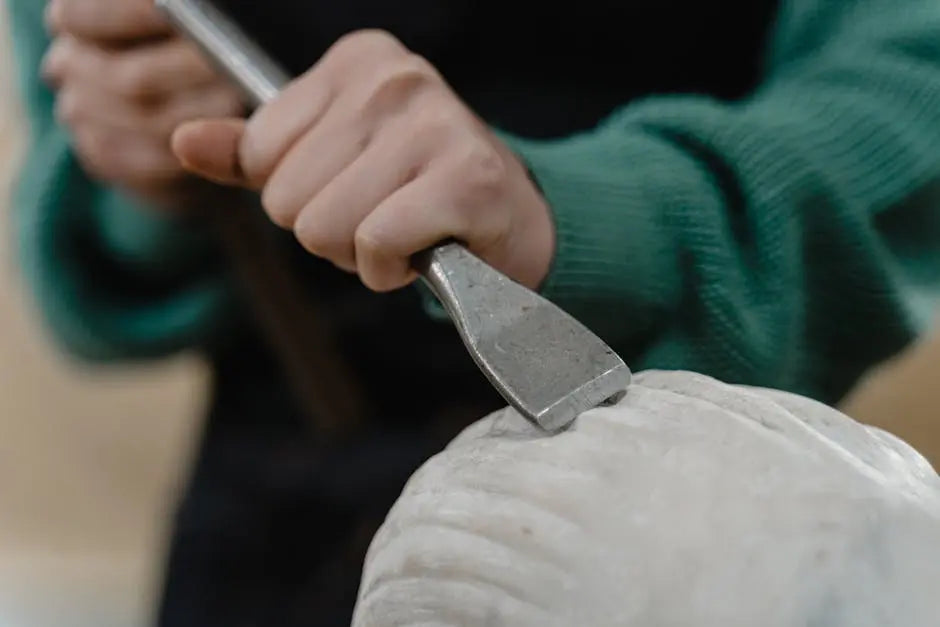My Cart
Your Cart is Currently Empty
FREE SHIPPING ON ALL ORDERS ABOVE $500


Stone art is a captivating form of creative expression that has been cherished for centuries. It involves transforming raw stone into beautiful and meaningful pieces of art. In this FAQ blog, we will explore what stone art is and provide insights into how it is created.
Stone art refers to the practice of designing and shaping stone to create sculptures, carvings, and other artistic works. This can include both functional and decorative items, ranging from intricate statues to simple stone engravings.
The versatility of stone as a medium provides endless creative opportunities. Artists can reveal textures and patterns hidden within the stone, producing unique forms that nature alone couldn’t achieve. Stone art has the power to enhance both indoor and outdoor environments, serving as a bridge between the raw beauty of the natural world and human creativity.
Stone art has a rich history that dates back to ancient civilizations. Historical artifacts and structures, such as the awe-inspiring Stonehenge or the detailed statues of ancient Greece, highlight the long-standing human fascination with this art form.
Ancient cultures saw stone as eternal, leading to its use in the creation of monuments and spiritual artifacts. From the Great Pyramids in Egypt to the intricate temples of the Maya, stone art has always played a pivotal role in cultural expression and the recording of human achievement and spirituality.
In recent centuries, stone art continues to evolve, influenced by movements such as modernism and abstract art. Today, artists push the boundaries of stone art even further, experimenting with different types of stone and incorporating innovative design approaches.
The creation of stone art requires specific tools and materials. Common tools include chisels, hammers, and grinders, while artists often use various types of stones like marble, granite, and limestone depending on the desired finish and durability.
Hand tools are vital in achieving detailed craftsmanship, giving artists the finesse needed for elaborate details. Power tools, on the other hand, bring efficiency, allowing artists to work with larger stones or create smoother finishes with less effort.
Aside from the traditional tools, some artists also employ pneumatic tools and even digital technology, such as laser cutters, to assist in precision work. This blend of old and new techniques demonstrates the continuous innovation present in the field of stone art.
Starting with a solid piece of stone, artists use techniques like carving, chiseling, and polishing to bring their visions to life. Each method requires skill and patience, as one wrong move can alter the intended outcome.
Carving is one of the most direct methods, where material is meticulously removed to reveal intricate designs. Chiseling, meanwhile, often involves the creation of finer details on a previously roughed-out form.
Polishing not only enhances the stone’s natural beauty but also provides a smooth finish that can contrast strikingly with rougher textures. Each step in the process requires both physical skill and imaginative foresight.
Stone art can range from realistic sculptures to abstract designs. Artists are inspired by nature, mythology, and everyday life, which is reflected in their unique styles and choices of subjects.
Abstract stone art allows artists to explore forms uninhibited by realism, often emphasizing shape, color, and texture. Realistic sculptures, in contrast, require precise measurements and a keen eye for detail to capture likenesses and expressions.
Garden and landscape sculptures are a popular choice, designed to interact with their environment as light and seasons change. These works not only enhance natural settings but also blend with their surroundings, enhancing the overall aesthetic.
For those interested in exploring stone art, numerous resources, workshops, and classes are available. Beginners are encouraged to start with simple projects before progressing to more complex pieces as they gain experience and confidence.
Online platforms and community forums also offer valuable insights and tutorials on stone art techniques, making it easier for aspiring artists to find guidance and support. These resources often feature step-by-step guides, safety tips, and recommendations for selecting suitable stones.
Practicing stone art isn’t just about technical skill but also finding a personal connection with the medium. As artists develop their style, they often discover new ways to convey messages and evoke emotions through their pieces.
Stone art is a timeless art form that allows artists to express their creativity using one of nature’s most durable materials. By understanding the different techniques and steps involved, anyone can appreciate and perhaps even try their hand at creating their own stone masterpieces.